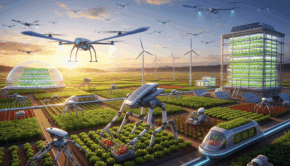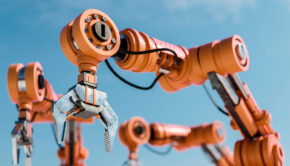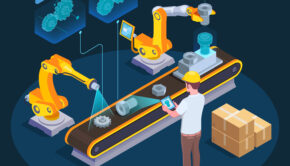5 Ways IoT & AI Are Changing The Future of Manufacturing
Manufacturing is among the leading industries that have benefitted from technological advancement. Research shows that human labor will be almost completely replaced in a few years to come. IoT and AI applications have really changed the manufacturing landscape.
Apart from automation and the use of robotics, both IoT and AI systems have shown a great impact in optimizing manufacturing procedures, quality control analysis, and detection of possible equipment failures. All these play a significant role in ensuring that all manufacturing operations run smoothly and quick action is taken in case of emergencies to make processes continuous.
Most manufacturing technologies aren’t aimed at getting rid of human labor completely. Most of them have been developed to remake manufacturing by implementing new skills and disciplines.

Manufacturing companies that haven’t adopted IoT and AI technologies have a higher risk of losing clients to their competitors who understand the need for speed and innovation. Below are 5 ways IoT & AI are changing the future of manufacturing:
1. Automating manufacturing supply chain
The manufacturing supply chain involves many activities that should always run smoothly to ensure the production cycle doesn’t stop unexpectedly.
First, it assists in maintaining multi-vendor workflows. Most companies source raw materials from different suppliers and require real time completion of activities like clearing customs, moving unfinished goods, currency exchange, and filing paperwork. IoT and AI have helped automate all these processes and eliminate the need for human intervention in aspects like route planning, thus increasing accuracy and preventing slowdowns.
These technologies also help in proactive sourcing to curb the shortage of resources. They help company managers to predict and anticipate likely events, thus making sound decisions for unforeseen events. In terms of resource distribution, automation makes real time re-ordering of crucial supplies when there’s an anticipated shortage or more production units are required.
2. Quality control of products
It’s essential for all manufacturers to ensure their products pass the set quality standards at all times. Basically, there are laid down protocols and standards that should be met in manufacturing, such as pH balance, contaminant testing, metal levels, especially in edible consumer products, and general consumer safety.
IoT and AI technologies make quality control easier and limit human intervention, which has a higher risk of quality control standards. Automated systems will detect any unusual quality problems for easy adjustment during production.
3. Reduces complex process uncertainty
Manufacturing experts believe that most jobs in the industry that require repeAI technologies make quality control easiertitive effort are at a higher risk of being phased out completely with the rise of IoT and AI systems. Although this has a detrimental effect on human labor, it’s seen to impact the industry positively.
IoT and AI are revolutionizing the industry by eliminating the risk of preventable errors. These errors lead to resource wastage, product recalls, overproduction, employee injuries, etc.
Automation of manufacturing processes also makes it easier to move raw materials between plants, thus reducing time wastage and improving production units per given time.
4. Cognitive operations & processes
Manufacturing companies usually collect and store production data for future use, specifically to help managers improve operations. When data continues to grow and becomes complex, managers have a higher risk of making wrong decisions that affect output. The use of automated JD Edwards software makes it easier to analyze this data and make sound decisions around improving quality, operations, and safety.
5. Proactive maintenance of essential manufacturing infrastructure
IoT & AI technologies have changed how maintenance of critical infrastructure, including equipment, is done. Manufacturing equipment sometimes tends to fail and cause a lot of downtime in the entire production cycle.
This not only leads to delays in manufacturing but also reduces company profits by a huge margin. This mainly happens if you don’t have an alternative solution to such problems. Having automated sensors and temperature devices will help engineers intervene to prevent the total collapse of operations.
In conclusion, these are the top ways IoT & AI are changing the future of manufacturing. They also play a key role in improving energy efficiency and conducting asset tracking.
Statistics show that the internet of things and artificial intelligence can increase manufacturing accuracy by at least 10%. This increased accuracy translates to a more than 5% increase in profits.











![What is the Best Time to Post on Social Media? [Infographic]](https://technofaq.org/wp-content/uploads/2020/06/word-image-44-150x150.png)




